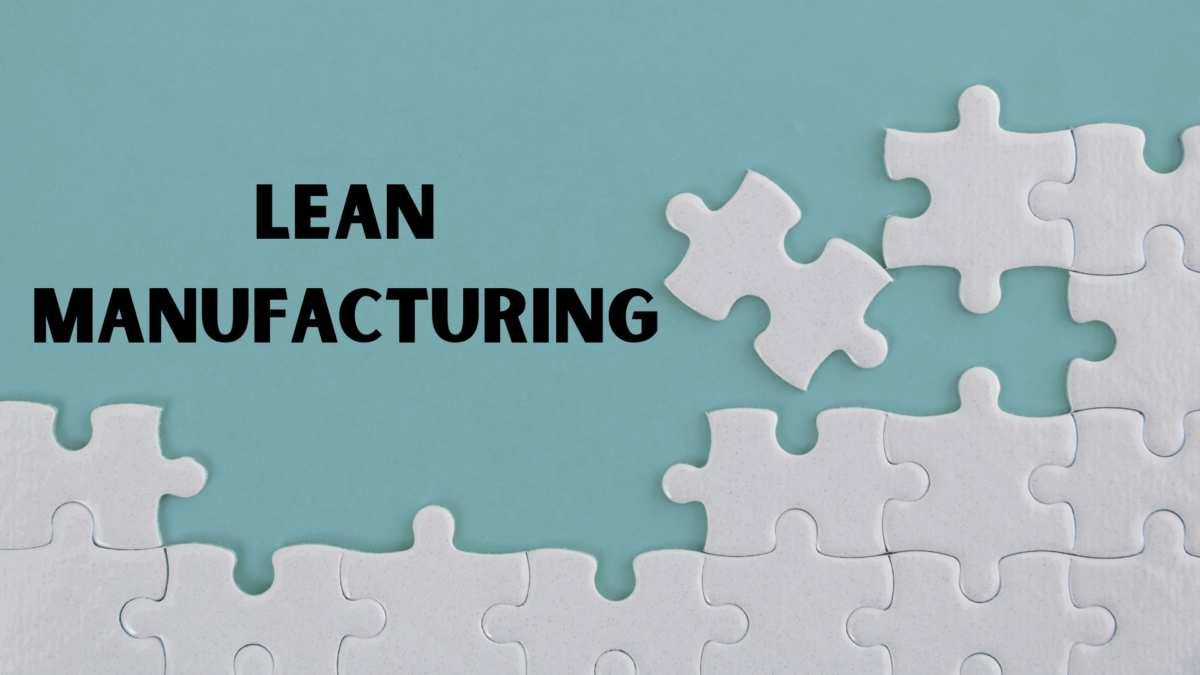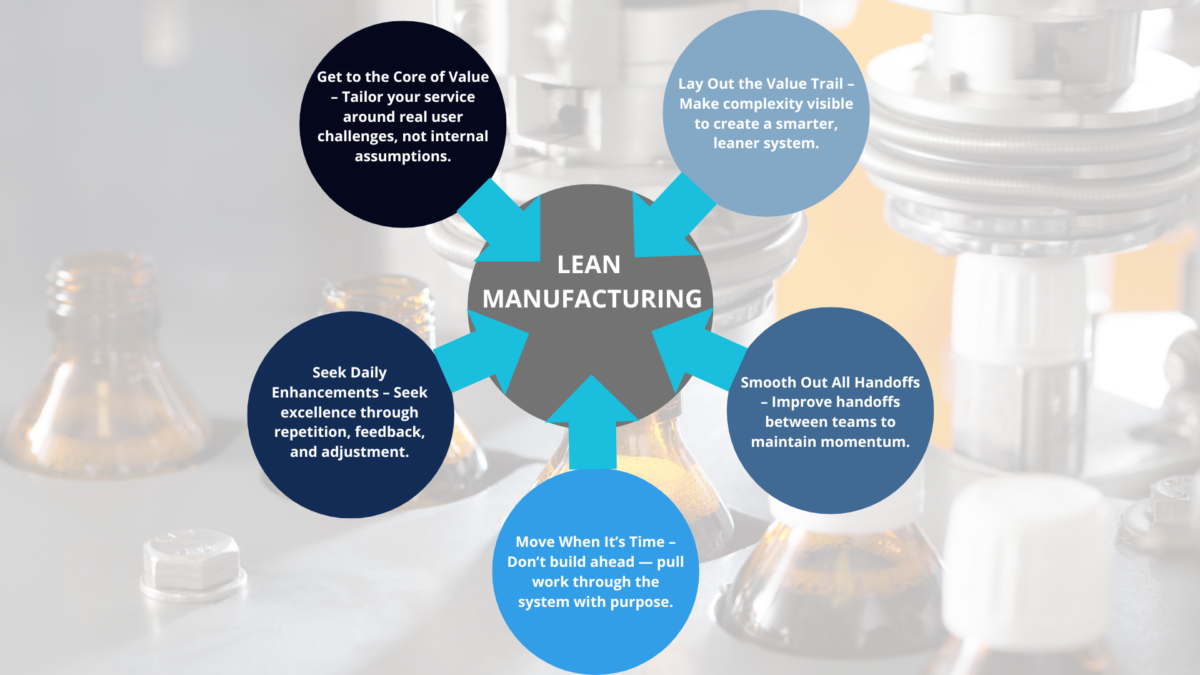Lean Productivity: How to Maximize Output with Minimal Waste

In a world where efficiency determines survival, lean productivity is no longer a competitive advantage—it’s a business necessity. Companies across industries want to do more with less, streamline their manufacturing process, and respond swiftly to customer demand without sacrificing quality.
Understanding lean manufacturing is essential for grasping its origins and core principles and its significant impact on improving operational efficiency and reducing waste within production processes.
At the heart of this pursuit lies lean manufacturing, a methodology rooted in lean thinking that drives value by eliminating waste, optimizing production processes, and creating a culture of continuous improvement. Lean manufacturing originated from the historical development of production systems, particularly the Toyota Production System (TPS) pioneered by Toyota Motor Corporation. Influenced by earlier concepts such as scientific management developed by Frederick Winslow Taylor, lean manufacturing evolved by integrating these foundational ideas with Japanese innovations, emphasizing waste reduction, continuous improvement, and value stream optimization. In this comprehensive guide, we’ll explore what lean productivity means, the principles that guide it, and how businesses can implement it to deliver lasting results.
What Is Lean Productivity?
Lean productivity is the outcome of applying lean principles to production systems to achieve more output with fewer resources. It’s not about working harder—it’s about working smarter. The lean production system is a comprehensive approach rooted in waste reduction and continuous improvement, shaping how organizations optimize their processes.
This approach combines philosophy and practice. Inspired by the Toyota Production System, lean productivity focuses on reducing waste (muda), aligning production with actual customer demand, and promoting problem-solving at every level of the organization. The key principles of lean productivity include continuous improvement, waste reduction, value stream optimization, and a strong focus on customer needs. Instead of relying on preset production targets, lean productivity emphasizes demand-driven scheduling to minimize overproduction and waste.
🎓 Want to master Lean and implement it in your organization? Check out the Lean Management – Practical Course – your go-to resource for applied Lean tools and strategies.
The Pillars of Lean Productivity

The foundation of lean productivity lies in a few key concepts from decades of success in the automotive industry, especially at Toyota.
However, there is no universally accepted standard lean production model; lean is often viewed more as a culture or philosophy than a fixed set of rules, making consistent implementation challenging.
The manufacturing innovations that emerged during World War II and the postwar Japanese industry heavily influenced the development of lean productivity concepts.
1. Eliminate Waste
Lean identifies seven (now often eight) types of waste in any production process:
- Overproduction
- Waiting
- Transport
- Overprocessing
- Inventory
- Motion
- Defects
- Unused talent (the 8th waste)
Eliminating waste is the fastest route to boosting productivity without extra cost. Lean principles, especially in just-in-time manufacturing, focus on minimizing inventory levels to improve cash flow, reduce storage space, and enhance efficiency within production processes.
2. Just-in-Time (JIT)
JIT is the backbone of lean. Its success depends on accurately forecasting demand, ensuring production matches customer needs, and reducing waste. JIT ensures that each part, component, or service is available just when it is needed, not before or after. This reduces inventory costs and accelerates flow.
3. Pull System
Instead of pushing products based on forecasts, a pull system aligns production with real-time demand. This prevents overproduction and better aligns with actual customer demand.
4. Continuous Improvement (Kaizen)
Small, incremental changes add up. Continuous improvement is a constant process that requires regular assessment and adaptation. Everyone, from operators to managers, contributes to improvement. This culture is what sustains lean productivity over time.
5. Standardized Work
Lean creates standards not to restrict creativity, but to ensure consistency, efficiency, and a clear baseline for improvement.
6. Total Productive Maintenance (TPM)
Well-maintained machines reduce downtime and defects. TPM empowers operators to take ownership of their equipment—an essential part of boosting productivity.
Lean Manufacturing Techniques to Boost Productivity
Look at some powerful lean manufacturing techniques that help drive lean productivity. Adopting lean processes enables organizations to improve efficiency and establish efficient processes throughout production, leading to reduced waste and continuous improvement.
• Value Stream Mapping (VSM)
A core lean tool, VSM visualizes the materials and information required to deliver a product or service. By mapping each stage of the production cycle, organizations can identify waste and opportunities for improvement. It identifies non-value-adding steps and highlights improvement areas in the manufacturing process.
• 5S System
Sort, Set in Order, Shine, Standardize, and Sustain. 5S improves workplace organization and visual management, critical for eliminating motion waste and improving workflow.
• Kanban
Kanban is a simple yet powerful scheduling system that controls the logistical chain through visual cues. It enables a smooth pull system.
• Andon
A visual control system that alerts when there is a quality or process issue, allowing immediate action and minimizing productivity loss.
• SMED (Single-Minute Exchange of Die)
This method reduces the time it takes to changeover equipment, boosting flexibility and uptime.
🛠️ Interested in hands-on practice with these techniques? The Lean Management course offers downloadable checklists, templates, and case studies to guide implementation.
Quality Improvement and Customer Satisfaction
Lean manufacturing is more than just a method for streamlining production processes—it’s a proven approach to delivering higher-quality products that consistently meet and exceed customer demands. By eliminating waste and optimizing every step of the production process, lean manufacturing enables organizations to improve quality at its source.
Implementing lean manufacturing techniques such as total productive maintenance and continuous improvement ensures that equipment effectiveness is maximized and defects are minimized. These practices reduce downtime and enhance the reliability and consistency of output, leading to improved quality across the board.
A hallmark of the Toyota Production System—a benchmark for lean production systems worldwide—is its relentless pursuit of operational excellence through continuous improvement and a deep commitment to customer-centricity. By embedding lean manufacturing principles into daily operations, companies can optimize processes, reduce errors, and deliver products that align perfectly with customer expectations.
Organizations embracing lean manufacturing and production systems are better equipped to deliver higher-quality products and services. This results in greater customer satisfaction, increased loyalty, and a stronger reputation in the marketplace.
Supply Chain Optimization with Lean
Applying lean manufacturing principles to the supply chain unlocks significant opportunities for waste reduction and efficiency gains throughout all production processes. By leveraging lean focuses such as just-in-time production and pull systems, companies can minimize excess inventory and reduce inventory costs, ensuring that raw materials and finished goods flow seamlessly from suppliers to customers.
Lean manufacturing emphasizes the creation of a continuous flow within the supply chain, which shortens lead times and enables organizations to respond more quickly to customer needs. Techniques like value stream mapping allow businesses to visualize and optimize every step in the value stream, identifying bottlenecks and eliminating non-value-adding activities.
Implementing lean in the supply chain means applying the core principles of lean manufacturing—waste reduction, process optimization, and continuous improvement—beyond the factory floor. This holistic approach leads to cost savings, improved quality, and enhanced productivity across the entire supply chain.
Companies that successfully implement lean manufacturing principles in their supply chain operations gain a competitive advantage by improving efficiency, reducing costs, and consistently delivering products that meet customer satisfaction. The result is a more agile, responsive, and resilient supply chain that supports long-term business success.
Lean Productivity Across Different Industries
While born in manufacturing, lean productivity is now used in:
- Healthcare – reducing patient wait times and improving care delivery
- Logistics – optimizing delivery routes and warehouse operations
- Software development – enhancing project flow with Agile + Lean
- Finance – streamlining workflows and improving client services
- Retail – aligning stock levels with sales data to reduce overstocking
Lean enterprises extend lean principles beyond manufacturing to business systems, including supply chain management and corporate culture.
Anywhere there is a business process, lean productivity can be applied.
Case Example: Lean Productivity in Action
A global auto parts manufacturer struggled with high defect rates and missed delivery dates. By applying lean manufacturing tools like VSM, 5S, and standardized work, the company could optimize its manufacturing operations and streamline productive processes, leading to significant improvements. The company achieved:
- 35% reduction in lead time
- 40% improvement in first-pass yield
- 20% increase in overall lean productivity
- Zero machine downtime for 90 consecutive days using TPM principles
These results were achieved without investing in new equipment through process transformation.
Measuring Lean Productivity
You can’t improve what you don’t measure. Key performance indicators (KPIs) for lean productivity include:
- Overall Equipment Effectiveness (OEE)
- First Pass Yield (FPY)
- Lead Time Reduction
- On-Time Delivery Rate
- Inventory Turnover
- Downtime due to Maintenance
- Employee Suggestion Rate
Tracking these metrics over time shows how effectively your lean methods are being applied.
Challenges in Achieving Lean Productivity
Despite its many benefits, implementing lean production systems isn’t without obstacles:
- Resistance to change from employees or management
- Poor understanding of Lean philosophy
- Inconsistent leadership support
- Focus on tools rather than culture
- Lack of ongoing training or follow-through
Some critics of lean argue that the methodology can sometimes overlook employee well-being or be compared to outdated management practices like scientific management. These lean argument perspectives highlight concerns that a strong focus on waste reduction may negatively impact workers.
💡 To overcome these challenges, training is key. Explore Teamwork and Leadership to ensure your team is aligned and empowered to lead the change.
Building a Lean Culture for Sustainable Productivity
Sustaining productivity gains requires a mindset shift across the organization. This means embedding lean thinking into daily routines, communication, and decision-making. Embedding lean thinking throughout the organization is key to achieving operational excellence.
Best Practices:
- Start with leadership commitment
- Train across all levels
- Create visual systems (Kanban, dashboards)
- Celebrate wins and minor improvements
- Encourage cross-functional collaboration
- Regularly revisit the value stream
📈 Want to embed Lean into the fabric of your operations? Learn how to develop a system for Continuous Improvement that aligns strategy and operations.
Final Thoughts: Lean Productivity as a Strategic Advantage
Lean productivity is not a temporary fix or a one-time project—it’s a strategic approach to running your business. By combining lean manufacturing, proven production processes, and a culture of continuous improvement, your organization can deliver more value with fewer resources.
In today’s economy, productivity is no longer about doing more—it’s about doing better.
🎓 Start Your Lean Journey Today
If you’re ready to move from theory to practice and unlock the full power of lean productivity, start with the Lean Management – Practical Course:
🎥 Dive into Lean at your own rhythm with the VoD format
♾️ Lifetime access – perfect for team onboarding & updates
🧰 Practical resources included – checklists, SOPs, red tags
🏭 Rooted in 25+ years of industry success
And if you’re looking to simulate Lean systems in action, don’t miss our immersive GET LEAN Simulation Game—perfect for teams seeking experiential learning and problem-solving skills.
